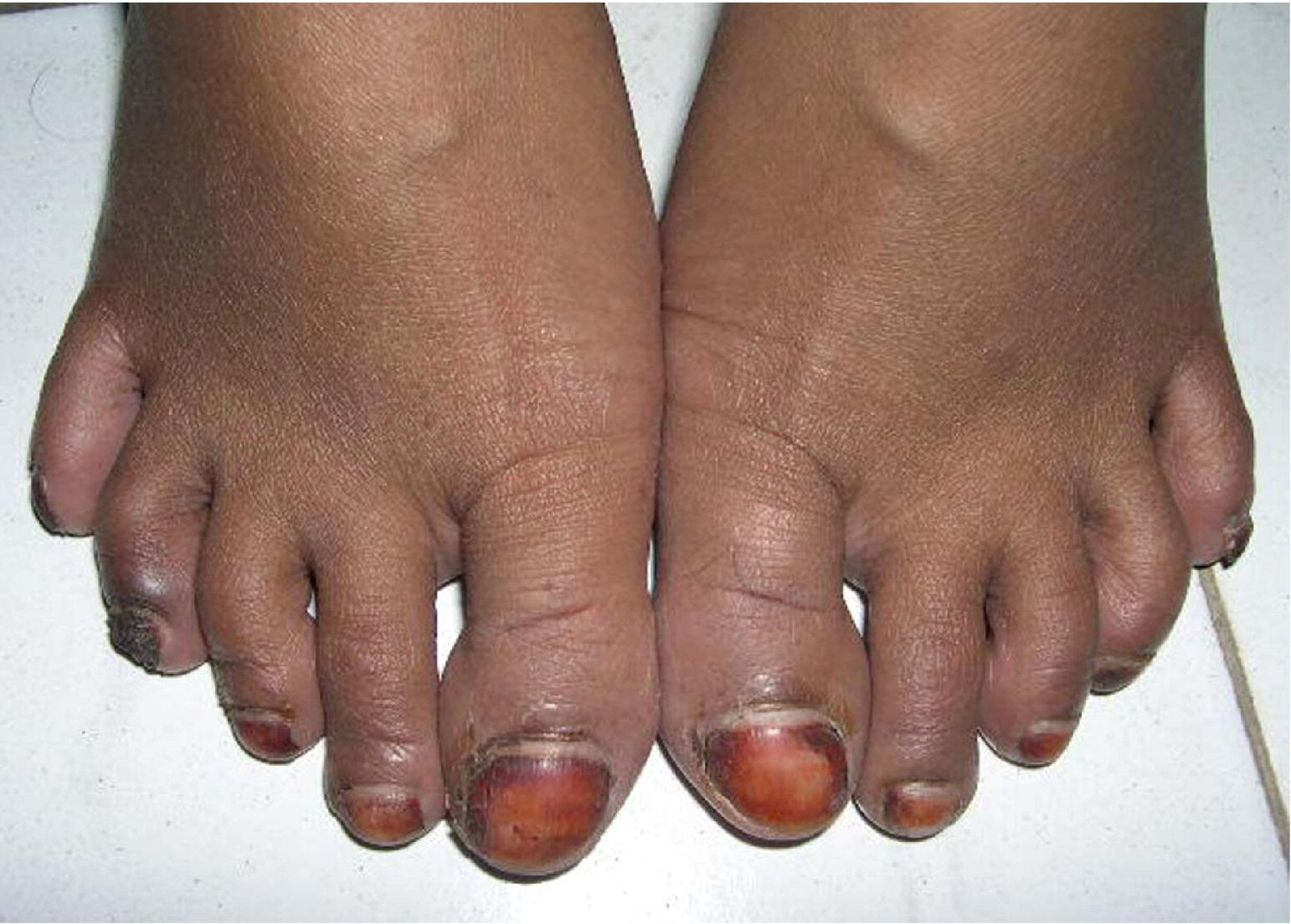
Pachyonychia Congenita Jackson–Lawler Type is a rare genetic disorder that affects the skin, nails, and sometimes other parts of the body. Characterized by thickened nails, painful calluses, and cysts, this condition can significantly impact daily life. Caused by mutations in specific genes, it is inherited in an autosomal dominant pattern, meaning only one copy of the altered gene is needed to cause the disorder. Symptoms often appear in early childhood, making early diagnosis crucial for managing the condition effectively. While there is no cure, treatments focus on alleviating symptoms and improving quality of life. Understanding this condition can help those affected and their families navigate the challenges it presents.
Key Takeaways:
- Pachyonychia Congenita Jackson–Lawler Type is a rare genetic disorder causing nail abnormalities, painful blisters, and thickened skin. Treatment focuses on managing symptoms and improving quality of life through pain management and specialized care.
- Living with Pachyonychia Congenita Jackson–Lawler Type requires ongoing support, including joining support groups, regular check-ups, using adaptive devices, and educating others. Research is ongoing to develop more effective treatments and improve understanding of the condition.
What is Pachyonychia Congenita Jackson–Lawler Type?
Pachyonychia Congenita Jackson–Lawler Type is a rare genetic disorder affecting the skin, nails, and other parts of the body. This condition is part of a group of disorders known as Pachyonychia Congenita (PC). Understanding this condition can help in managing its symptoms and improving the quality of life for those affected.
-
Genetic Mutation: This type of Pachyonychia Congenita is caused by mutations in the KRT6A or KRT16 genes, which are responsible for producing keratin, a protein essential for skin and nail health.
-
Nail Abnormalities: One of the hallmark features includes thickened, discolored nails that may become painful and prone to infections.
-
Skin Issues: Individuals often experience thickened skin on the palms and soles, leading to painful blisters and calluses.
-
Cysts: Small, fluid-filled cysts can develop on various parts of the body, particularly around hair follicles.
-
Oral Lesions: White patches or thickened areas can appear on the tongue and inside the mouth, causing discomfort.
Symptoms and Diagnosis
Recognizing the symptoms early can lead to better management of the condition. Diagnosis typically involves genetic testing and clinical evaluation.
-
Early Onset: Symptoms usually appear in infancy or early childhood, making early diagnosis crucial for management.
-
Painful Blisters: Blisters on the feet and hands can be extremely painful, often limiting mobility and daily activities.
-
Hyperkeratosis: This refers to the thickening of the outer layer of the skin, which is a common symptom.
-
Hoarseness: Some individuals may develop a hoarse voice due to thickened vocal cords.
-
Genetic Testing: Confirming the diagnosis often involves genetic testing to identify mutations in the KRT6A or KRT16 genes.
Treatment and Management
While there is no cure for Pachyonychia Congenita Jackson–Lawler Type, various treatments can help manage symptoms and improve quality of life.
-
Pain Management: Over-the-counter pain relievers and prescription medications can help manage pain from blisters and calluses.
-
Moisturizers: Regular use of moisturizers can help soften thickened skin and reduce discomfort.
-
Foot Care: Specialized footwear and orthotic devices can alleviate pressure on the feet, reducing pain from blisters and calluses.
-
Cyst Removal: In some cases, cysts may need to be surgically removed if they become painful or infected.
-
Speech Therapy: For those with hoarseness, speech therapy can help improve vocal function.
Living with Pachyonychia Congenita Jackson–Lawler Type
Living with this condition requires ongoing care and support. Understanding how to manage daily challenges can make a significant difference.
-
Support Groups: Joining support groups can provide emotional support and practical advice from others who understand the condition.
-
Regular Check-ups: Frequent visits to dermatologists and other specialists are essential for monitoring and managing symptoms.
-
Adaptive Devices: Using adaptive devices can help with daily tasks, reducing strain on affected areas.
-
Dietary Changes: Some individuals find that certain dietary changes can help manage symptoms, particularly oral lesions.
-
Education and Awareness: Educating family, friends, and caregivers about the condition can foster a supportive environment.
Research and Future Directions
Ongoing research aims to better understand Pachyonychia Congenita Jackson–Lawler Type and develop more effective treatments.
-
Gene Therapy: Researchers are exploring gene therapy as a potential treatment to correct the underlying genetic mutations.
-
Clinical Trials: Participation in clinical trials can provide access to new treatments and contribute to scientific understanding.
-
Patient Registries: Joining patient registries helps researchers gather data and identify trends, leading to improved care.
-
Advocacy: Advocacy groups work to raise awareness and funding for research, supporting those affected by the condition.
-
Innovative Treatments: Scientists are continually developing new treatments, such as topical therapies and medications, to manage symptoms more effectively.
The Takeaway on Pachyonychia Congenita Jackson–Lawler Type
Pachyonychia Congenita Jackson–Lawler Type is a rare genetic disorder that affects the skin, nails, and sometimes the teeth. Understanding its symptoms, causes, and treatment options can make a big difference for those living with it. Early diagnosis and proper care can help manage the condition, improving quality of life. Genetic counseling is also valuable for families affected by this disorder. While there's no cure yet, ongoing research offers hope for better treatments in the future. Staying informed and connected with support groups can provide emotional and practical assistance. Remember, knowledge is power when dealing with rare conditions like Pachyonychia Congenita Jackson–Lawler Type.
Frequently Asked Questions
Was this page helpful?
Our commitment to delivering trustworthy and engaging content is at the heart of what we do. Each fact on our site is contributed by real users like you, bringing a wealth of diverse insights and information. To ensure the highest standards of accuracy and reliability, our dedicated editors meticulously review each submission. This process guarantees that the facts we share are not only fascinating but also credible. Trust in our commitment to quality and authenticity as you explore and learn with us.
